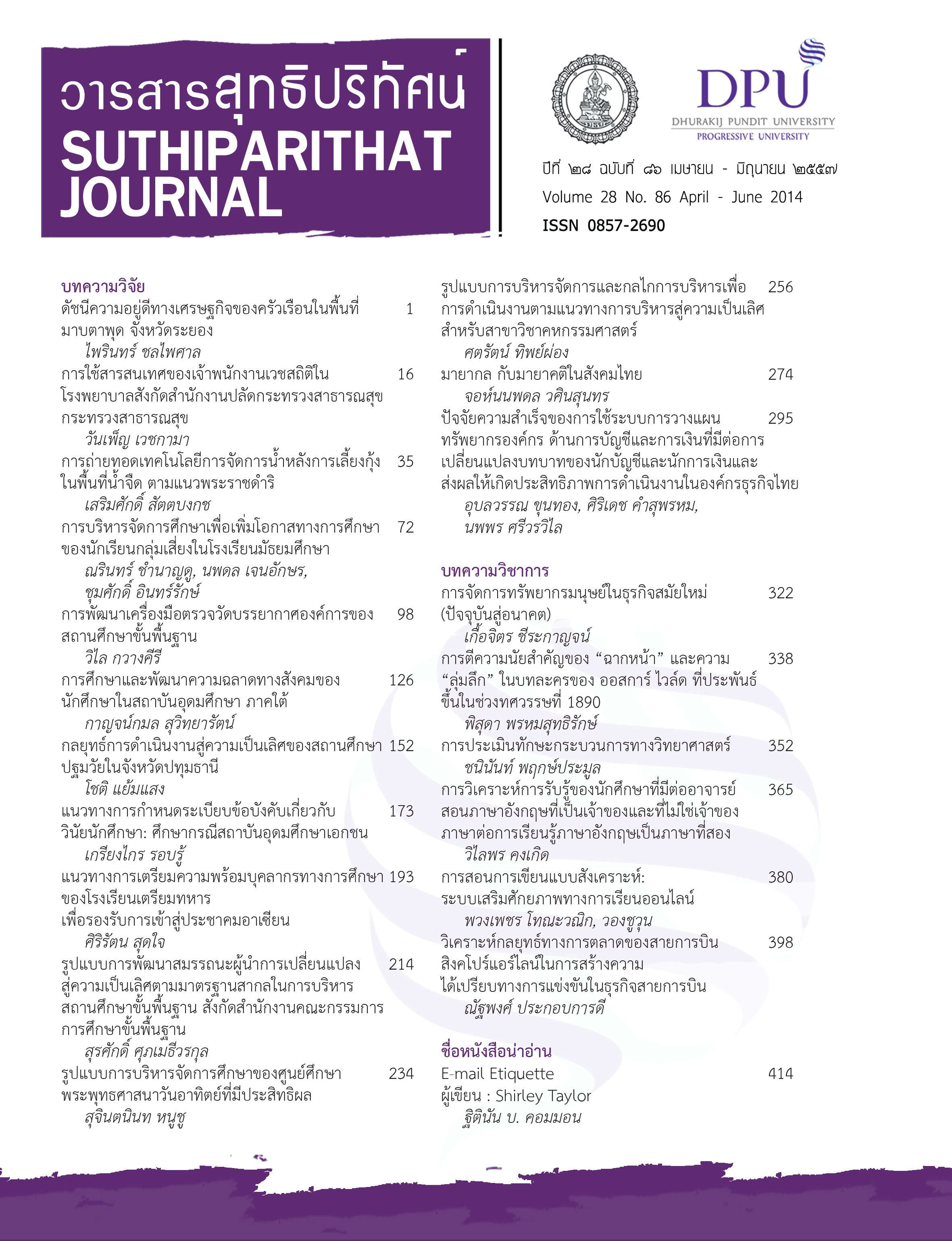AN ANALYSIS ON MARKETING STRATEGIES ON SINGAPORE AIRLINES TO GAIN AN COMPETITIVE ADVANTAGE IN THE AIRLINE BUSINESS
Keywords:
Marketing Strategies, Singapore Airlines, Brand Management, Competitive AdvantageAbstract
During the last few decades, the aviation industries have faced unexpected situations which have had negative effects on revenue and development of the airline businesses. To illustrate, the extreme shocks with the September 11 attacks, the SARS epidemic, spiralling fuel costs and the world’s economic slowdown have had direct impacts on demand for air travelling. In addition, the open skies policies in US and EU have been increasing new competitors into the domestic and international markets. Thus, it seems difficult for the airlines to get through a long period of turmoil and high competition in the aviation industry. However, Singapore Airlines has been consistently positioned as a world-class service airline with high levels of innovations, excellent levels of service quality and cost effectiveness throughout its more than 25 year history. It has won the international awards such as Best Asia-Pacific Airline, Best First Class, Best Business Class and Best Economic Class from Business Traveller Awards (Asia-Pacific) in 2013. Therefore, the aim of this article is to examine the marketing strategy of Singapore Airlines how the company can be sustainable on the top of airlines in this turbulent business environment. Furthermore, this paper attempts to analyse the concepts of brand values and brand personality on Singapore Airlines how the airline can communicate them to customers. Finally, it will evaluate and discuss about how Singapore Airlines achieves in brand management.
References
Chan, D. (2000a). Beyond Singapore Girl Grand and product/service differentiation strategies in the new millennium, The Journal Management Development, 19(6), pp. 515-542.
Chan, D. (2000b). Air wars in Asia: competitive and collaborative strategies and tactics in action. Retrieved October 10, 2013, from http://www.apmforum.com/strategy/airwars.pdf.
Chan,D. (2000c). The story of Singapore Airlines and the Singapore Girl. Retrieved October 12, 2013, from http://web.biz.uwa.edu.au/units/mktg8550/readings/SIAnSIAgirlstory.pdf.
Chan, E. (2010). Brand Equity – The Success of Singapore Airlines. Retrieved October 14, 2013, from http://blogs.ubc.ca/eugenesanchan/2010/11/08/brand-equitythe-success-of-singapore-airlines/
Chong, M. (2007). The Role of Internal Communication and Training in Infusing Corporate Values and Delivering Brand Promise: Singapore Airlines’ Experience. Retrieved October 14, 2013, from http://www.palgrave-journals.com/crr/journal/v10/n3/full/1550051a.html
Crawford, L. (2009). Singapore Airlines Case Study. Retrieved October 14, 2013, from http://iblob.com.ausingapore-airlines-case-study/
Flouris, T.and Oswald, S. (2006). Designing and Executing Strategy in Aviation Management. Aldershot: Ashgate Publishing Limited.
Haddad, M., Wu, S., Tang, W. and Maulgue, T. (2009). Service-Dominant Logic – A case Of Singapore Airlines. Retrieved October 15, 2013, from http://talisalouise.files.wordpress.com/2010/06/service-science-and-singapore-airline.pdf.
Heracleous, L. and Wirtz, J. (2009). Strategy and organization at Singapore Airlines: Achieving sustainable advantage through dual strategy, Journal of Air Transport Management. pp. 1-6
Heracleous, L.., Wirtz, J. and Johnston, R. (2004). Cost-effective service excellence: lessons from Singapore Airlines, Business Strategy Review, 15(1), p.33-38.
Holloway, S. (2002). Airlines: Managing to Make Money. Aldershot: Ashgate Publishing Limited.
Kalligiannis, K. (2009). An investigation of potential brand inconsistencies within airline strategic alliance. PhD thesis School of Engineering Department of Air Transport, Cranfield University.
Kamath, A. and Tornquist, J. (2004). Strategic Issues in the Airline Industry and the Role of Singapore International Airlines. Retrieved October 16, 2013, from http://www.delhibusinessreview.org/v_5n1/v5n1a.pdf.
Ramaswamy,K. and Modi,M. (2001). Singapore International Airlines: Strategy with a Smile. Retrieved October 16, 2013, from http://homepage.ntlworld.com/duc_huynh/PDFFiles/SIA_StrategyWithASmile.pdf.
Roll, M. (2006). Asian Brand Strategy: How Asia Builds Strong Brands. New York: Palgrave Macmillan.
Shaw, S. (2007). Airline Marketing and Management, 6th edn. Aldershot: Ashgate Publishing Limited.
Tan, E. (2006) Singapore Airlines: A Study in Exemplary Crisis Communication. MA thesis. Wichita State University.
Wirtz, J., Heracleous, L. and Pangarker, N. (2008). Managing human resources for service excellence and cost effectiveness at Singapore Airlines, Managing Service Quality,18(1), pp. 4-19.
Downloads
Published
How to Cite
Issue
Section
License
Content and information of the article published at Suthiparithat Journal are based on the sole opinions and responsibility of author(s) only. Neither the editorial board involve in......







